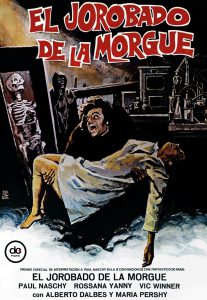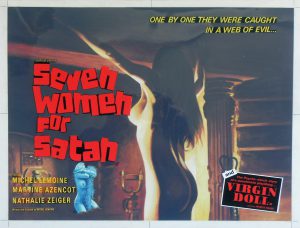https://twitter.com/AngusKohm/status/1309738931890597888
I’ve taken to doing crosswords lately. I never had much interest in them when I was younger, but a couple of years ago, during a regular visit with my favourite (now) 98 year old actress, she expressed frustration with a book of New York Times Sunday Crosswords she had been given as a gift. She likes doing crosswords in her regular newspaper, but those New York Times ones were much more difficult. So, my partner and I decided to try doing one with her.
She was right. It was difficult. It took us three visits to complete one crossword. And that was with three brains working on it (one of which was prone to cheating once in awhile, by looking things up with a smartphone).
I supposed I had never really understood the language of crosswords; the different techniques that seemed designed to make things more confusing. For example, some clues have a question mark at the end of them. This, we figured out, meant that the answer was going to be “clever” in some way. So it was impossible to figure it out in a normal, logical way. We had to wait until we had a few clues to point us in the right direction. In other words, we needed to figure out some of the other words that intersected with this “clever” one so that we could see some of the letters that were in it. Worst case scenario, we would have to find ALL of the letters in the “clever” word by solving the intersecting ones, because even with only one blank left, we still couldn’t figure out what they were after.
Thanks to this whole COVID thing, we haven’t been able to visit our friend Doreen (who just turned 98 a few days ago) for a few months. Both she and I have found that we miss working on these frustrating puzzles together. Perhaps because of this, I have started doing the crosswords that I find in the regular newspaper, the TV guide, and even in some flyer packages. Most of them are a lot easier than the New York Times puzzles in Doreen’s book. But there are a couple that seem, to me, to be just as frustrating – if not more so.
Perhaps the worst (or best, depending on your point of view) is a gigantic crossword that takes up an entire newspaper page. The one I am currently working on has 371 ACROSS words, and 357 DOWN words. Most of the others average about 60 words for both ACROSS and DOWN. This is not the only reason that the gigantic crossword is difficult, however. It also makes use of all the most confusing and deliberately tricky clues that make simply knowing an answer a rare occurrence. Often I just don’t know what they are getting at. And sometimes when the answer is finally revealed (by carefully piecing it together), I STILL don’t know what they were getting at. “Why did they phrase the question that way?” I ask the silent newspaper. But it never answers me, and I’ve had to accept the fact that some of these riddles don’t have a logical solution and – if I don’t want to go out of mind – I simply have to enjoy the experience of letting them slowly reveal themselves to me.
In some ways, that’s not unlike watching a Jean Rollin movie. I don’t consider myself an expert, by any means. I’ve barely scratched the surface of his impressive oeuvre. I talked about my first impressions of his work in a previous post highlighting The Living Dead Girl (1982). One of my points was that I knew Rollin was famous for his vampire films, but I had come to know him mainly through his non-vampire films. Clearly, I’ve been long overdue for a exploration of what seems to be his main obsession.
I did some reading, and determined that a good place to start was Requiem for a Vampire (1971) – even though this was not his first vampire film. This worked out very nicely for me, because I happened to have a brand new copy of that film waiting to be watched (and I don’t own the previous ones – yet).
Anyone who knows me understands that I like to go into a movie not knowing anything about it (or at least not much of the plot). I like to experience the story without any preconceived notion of what it might be about. As such, I don’t like to spend a lot of time summarizing the plots of the films that I discuss in this blog. For one thing, there’s probably a million other blogs and sites where a person can read a plot synopsis if they really want to do that. More to the point, I don’t want to spoil anybody’s first experience of a film by telling them exactly what’s going to happen in it. However…
Trying to summarize the plot of Requiem for a Vampire (or most of the Jean Rollin films that I have seen) would be, in my opinion, a rather pointless exercise. It would be akin to trying to summarize the plot of a poem. Requiem for a Vampire is as much about tone and atmosphere and visual images as it is about plot or story. But just for the sake of argument, I’ll try to describe the first part of the film.
The story opens with two young women dressed in clown costumes, for reasons we don’t know, driving at high speed on a country road. They are being pursued by a second vehicle, for reasons we don’t know. One of the women is firing a gun at their pursuers, who are also shooting back at her, for reasons we don’t know. The other woman is desperately trying to steer the car from the passenger seat – for a reason we DO know; the male driver, who is NOT in clown make-up, has been hit by a bullet and is bleeding bad. There is almost no dialogue during this action, or after it’s resolved, or for the next twenty or thirty minutes. Needless to say, we do not hear any explanations for any of what we have witnessed thus far (such as why the two women are in clown make-up, or why they were in a high speed gunfight on a country road). We do eventually hear a brief comment about it, but by that point we are so deep into the movie that it really doesn’t matter. And in fact, I almost would have preferred to have never heard an explanation for any of it, because it’s very inexplicability is a big part of the charm of this movie (at least for me).
And let me be clear about this: I loved this movie! And I loved the first sequence that I have partially described. But like some of the crossword clues that I mentioned earlier, there was no logical way to understand what was going on from moment to moment. There was no way to predict what was going to happen. And a person could ask themselves, “Why did they do that?” or “How did that opening scene lead to this scene?” But I did not find myself asking any of those questions. Instead, I found myself completely mesmerized and happy to simply relax and let the events of the movie unfold before me. I could use words like hypnotic and mind-bending (is that a word?) to try to describe the effect that it had on me. It’s kind of like listening to certain pieces of music. You can’t explain why they’re so darn effective but they are.
And speaking of music, I loved the soundtrack by Pierre Raph. I’m sure it added to the overall experience that I am trying to describe.
Suffice it to say, that my first foray into the vampire side of Jean Roliin’s work has been a rollicking success. Requiem for a Vampire (1971) is a rare form of #NotQuiteClassicCinema that would be equally at home in the finest art-house cinemas, or the sleaziest grindhouse porno palaces of the past. It made for a transcendent #FridayNightAtTheHomeDriveIn and I will gladly revisit it there anytime. I also look forward to exploring more vampire, and non-vampire, works by Jean Rollin in the future!
 Hunchback of the Morgue (1973) by #JavierAguirre
Hunchback of the Morgue (1973) by #JavierAguirre


